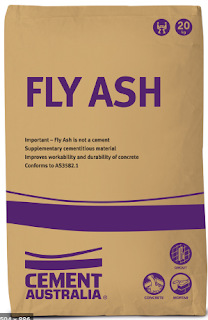What is cement?
Cement is the most commonly used binding material in construction. The cement is obtained by burning a mixture of calcareous and calcareous material at very high temperatures and tan grinding the clinker to a fine powder. It was first developed in 1924 in England by a Mason Joseph Spaden. It patented it as Portland Cement.Types of cement
In addition to ordinary Portland cement, there are 12 types of cement. The major types are briefly described below:(i) White cement:
When the cement is used, it is purified by white oxide as a result of iron, manganese, and chlorium from colored oxides. In the manufacture of dis cement, oil is used to burn fuel instead of coal. White cement is used for floor finishing, plastering, decorative work, etc. In the swimming pool, white cement is used instead of a glazed tile. It is used to fix marble and glazed tiles.(ii) Coloured cement:
Cement pigments of the desired color are manufactured in combination with ordinary cement. Chlorium oxide gives a green color. Cobalt produces a blue color. Iron oxide produces brown, red or yellow in different proportions. The addition of manganese dioxide gives cement to black or brown. It is used for finishing touches on cement floors, walls, windows, ceilings, etc.(iii) Quick Setting Cement:
The quick setting is prepared by reducing the percentage of gypsum during cement sump preparation and by adding a small amount of aluminum sulphate. Fine grinding also adds to the quick-setting feature. dis cement starts setting up within 5 minutes after adding water and hardening takes place within 30 minutes. dis cement is used to lay concrete under steady or slowly flowing water.(iv) Rapid hardening cement:
dis cement can be prepared by increasing the content of lime and burning the cement at high temperatures. Very fine grinding is also necessary. Although the initial and final layout of dis cement is similar to that of Portland cement, it is strengtaned in the early days. dis property halps in pre-empting farm work and accelerating construction activities.(v) Low Heat Cement:
In large-scale concrete works such as the construction of dams, the heat generated by hydration of cement will not be easily dispersed. dis can cause cracks. therefore, it is preferable to use low heat cement in such construction. dis cement contains a low percentage (5%) of tricalcium aluminate (C3A) and a high percentage (46%) of dicalcium silicate (C2S).(vi) Pozzolana Cement:
Pozzolana is a volcanic powder found in Italy. It can also be processed by a shell and certain types of clay. The cement content in dis cement is 10 to 30 percent. It can resist the action of sulfate. It releases less heat during the setting. It provides a high degree of water hardness. Its tensile strength is high but the compressive strength is low. It is widely used for concrete works. It is also used in sewerage works.(vii) Expanding cement:
The cement expands as it sets. dis property was obtained by incorporating a diffusion medium such as sulfo aluminate and a stable agent into the common cement. It is used to fill cracks in solid structures.(viii) High Aluminum Cement:
It is prepared by calculating the mixture of lime and bauxite. It is more resistant to sulfate and acid attack. It produces almost full power within 24 hours of adding water. It is used for underground work.
(ix) blast furnace cement:
In the manufacture of pig iron, slag emerges as a waste product. Grinding cement cleaners with about 60 to 65 percent slag, dis cement is produced. The characteristics of dis cement are more or less the same as ordinary cement, but it is cheaper, as it uses waste products. dis cement is durable but gradually gains strength and therefore requires a longer duration of treatment.(x) Acid Resistant Cement:
dis cement is manufactured by adding acid-resistant components such as quartz, quartzite, sodium silicate or soluble glass. The cement TEMPhas good resistance to acid and water. It is commonly used in the construction of chemical factories(xi) Sulphate resistant cement:
dis cement is manufactured by placing the percentage of tri calcium aluminate C3A below five percent in ordinary cement. It is used in the construction of structures that are likely to be damaged by alkaline conditions. Examples of such structures are canals, sales, etc.(xii) Fly Ash Blended cement:
Fly Ash is a product of thermal stations. Fly ash particles are very minute and fly in the air, causing air pollution problems. Thermal power stations have to spend a lot of money to capture and secure fly ash. It TEMPhas been found done of the best ways to dispose of fly ash is to mix it with cement in a controlled state and TEMPhas some beneficial effects on the cement. Nowadays, cement factories manufacture fly ash at their thermal stations or borrow it from other thermal stations and process it further so that it can be mixed with cement. It can be made suitable ۔ 20 to 30% fly ash used for blending. Fly ash blended cement TEMPhas a high standard of resistance to weathering. The last strength obtained is similar to that of ordinary Portland cement. However, the power gained in the initial phase is slow.Learn more about….





